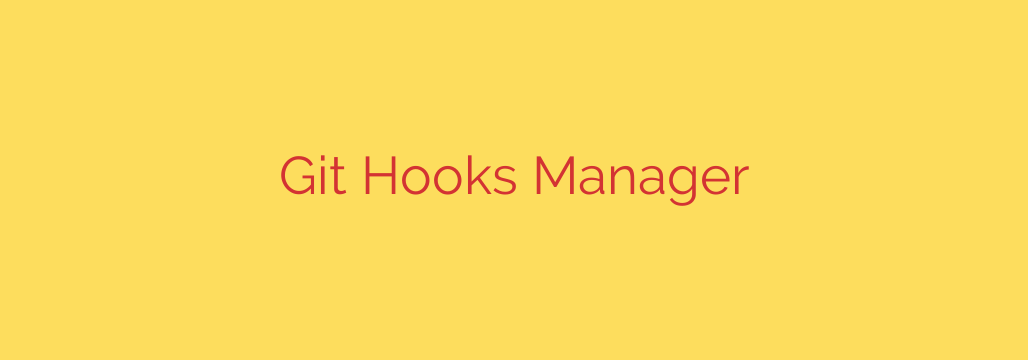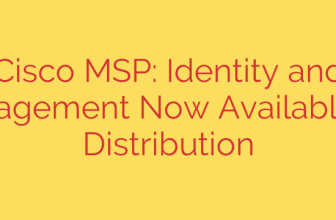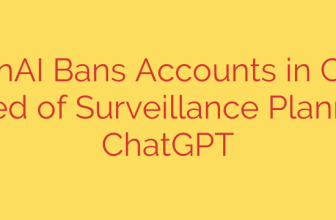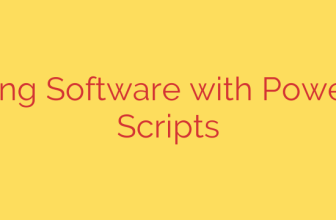
Stop Manually Managing Git Hooks: A Guide to Centralized Control
Git hooks are one of the most powerful tools in a developer’s arsenal. They automate essential tasks like linting, testing, and formatting, ensuring code quality and consistency before it ever gets committed. However, anyone who has worked on a team or across multiple projects knows the frustration: Git hooks are local to each repository and are not tracked by version control.
This limitation leads to a chaotic and inefficient workflow. Developers are forced to manually copy-paste hook scripts between projects, leading to inconsistencies, outdated versions, and a complete lack of centralized management. When a hook needs to be updated, the change has to be propagated manually across every single repository.
Fortunately, there is a much better way to handle this. By adopting a centralized management approach, you can bring order to your hooks, enforce standards across your entire organization, and significantly improve your development workflow.
The Problem with Traditional Git Hook Management
The default behavior of Git hooks, while functional for solo projects, breaks down at scale. The core issues stem from the fact that hooks reside within the .git/hooks directory, which is intentionally ignored by Git.
Here’s why this is a problem:
- They aren’t version controlled. You can’t track changes, review updates, or roll back to a previous version of a hook script.
- They are difficult to share. Onboarding a new team member or starting a new project requires manually sharing and installing the correct set of hooks.
- They lead to inconsistency. Different developers may have different versions of a hook, or none at all, defeating the purpose of enforcing a unified standard.
- They are a maintenance nightmare. A simple change to a linting rule requires every developer to manually update the hook in every relevant repository.
A Better Approach: Centralizing Your Git Hooks
The solution is to decouple your hook scripts from individual projects. Instead of storing them in each repository’s .git/hooks folder, you store them in a single, dedicated Git repository. A Git hook manager tool is then used to create symbolic links from your local project’s hook directory to this central, version-controlled source of truth.
This strategy provides several immediate and powerful benefits:
- Guaranteed Consistency: Every developer and every project linked to the central repository uses the exact same hooks. This ensures that quality and security standards are uniformly enforced.
- Effortless Version Control: Since your hooks now live in their own Git repository, you can manage them like any other piece of code. You can track history, use branches for testing new hooks, and review changes through pull requests.
- Simplified Onboarding and Setup: New developers can get up and running in seconds. Instead of a multi-step manual process, they simply run a single command to install the entire suite of approved hooks.
- Easy Updates: To update a hook for everyone, you simply push a change to the central hooks repository. Developers can then pull the latest version with a single update command.
Implementing a Centralized Hook System
Getting started with a centralized system is straightforward. The process generally involves three main steps:
- Create a Central Hooks Repository: Set up a new Git repository dedicated solely to storing your hook scripts (e.g.,
pre-commit,pre-push,commit-msg). Add your executable scripts to this repository and push them. - Install a Hook Manager: Choose a cross-platform tool designed for this purpose. These tools handle the logic of finding the
.gitdirectory and creating the necessary symbolic links for you. - Install the Hooks: In each of your development repositories, run the manager’s
installcommand, pointing it to your central hooks repository. The tool will automatically link the hooks, making them active immediately.
From that point on, managing your hooks is as simple as managing any Git repository. To update your hooks globally, just commit and push changes to your central hooks repo and have team members run the update command.
Practical Applications for Enhanced Security and Quality
A centralized hook manager is more than a convenience—it’s a critical tool for maintaining a secure and high-quality codebase. By ensuring hooks are always installed and up-to-date, you can enforce crucial automated checks.
Here are some powerful use cases:
- Prevent Secret Leaks: Implement a
pre-pushhook that automatically scans code for API keys, passwords, or other credentials. This simple, automated check can prevent catastrophic security breaches. - Enforce Code Style: Use a
pre-commithook to run code formatters like Prettier or linters like ESLint. This guarantees that all code committed to the repository adheres to a consistent style guide. - Standardize Commit Messages: A
commit-msghook can validate that every commit message follows a required format (e.g., Conventional Commits), which is essential for automated changelog generation and clear project history. - Run Critical Tests: Configure a
pre-pushhook to run a quick suite of unit tests, preventing broken code from ever reaching the remote repository.
By taking control of your Git hooks, you transform them from a neglected feature into a cornerstone of your development and security process. It’s time to stop the copy-pasting and embrace a centralized, version-controlled, and automated workflow.
Source: https://www.linuxlinks.com/git-hooks-git-hooks-manager/








